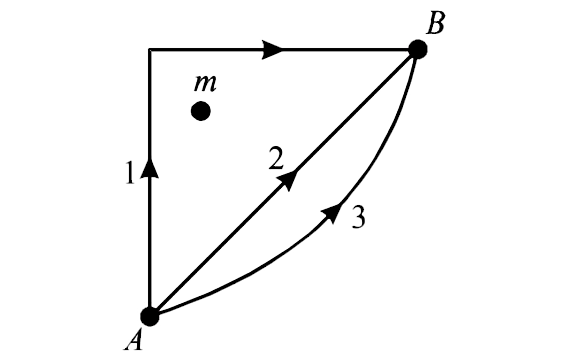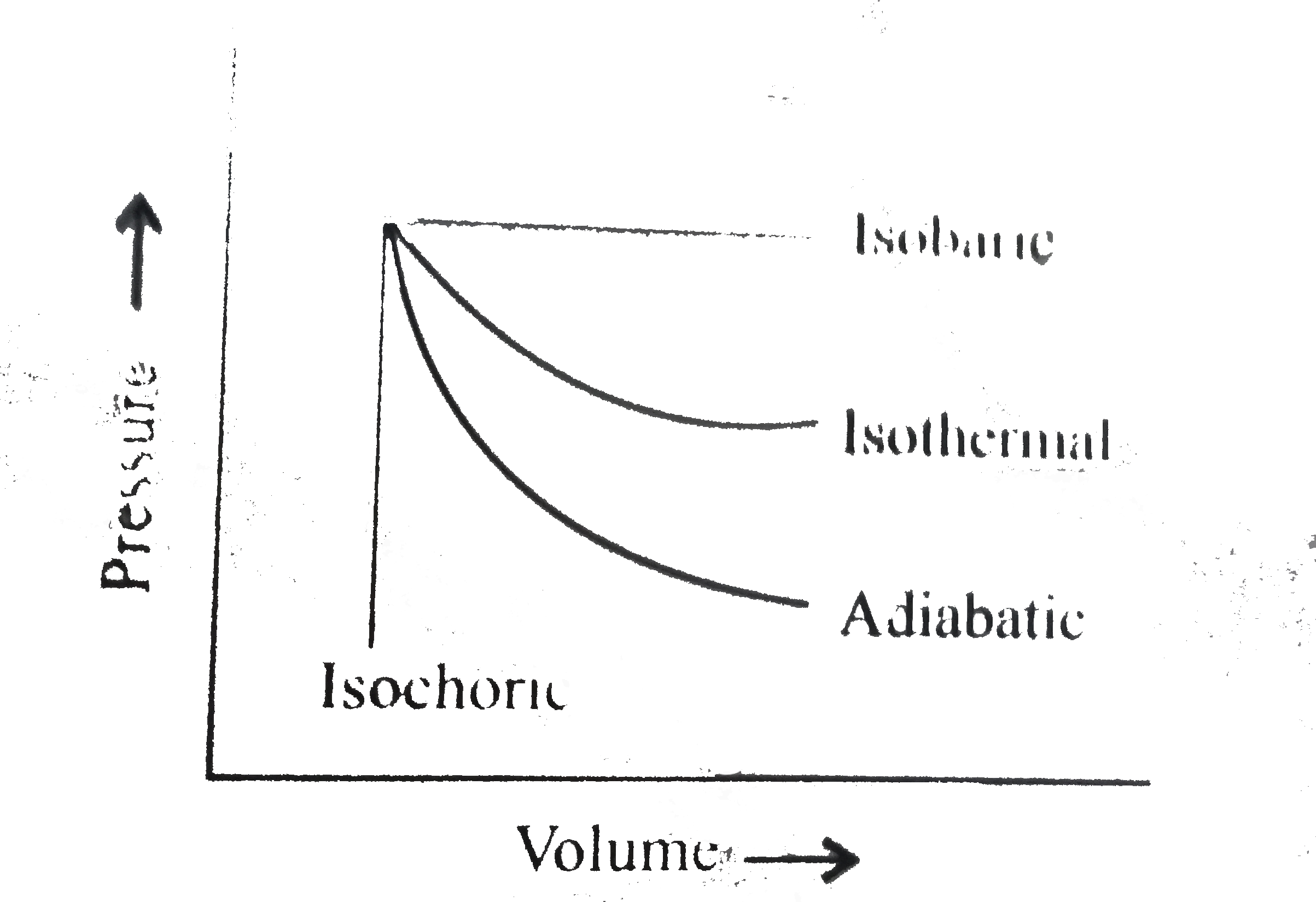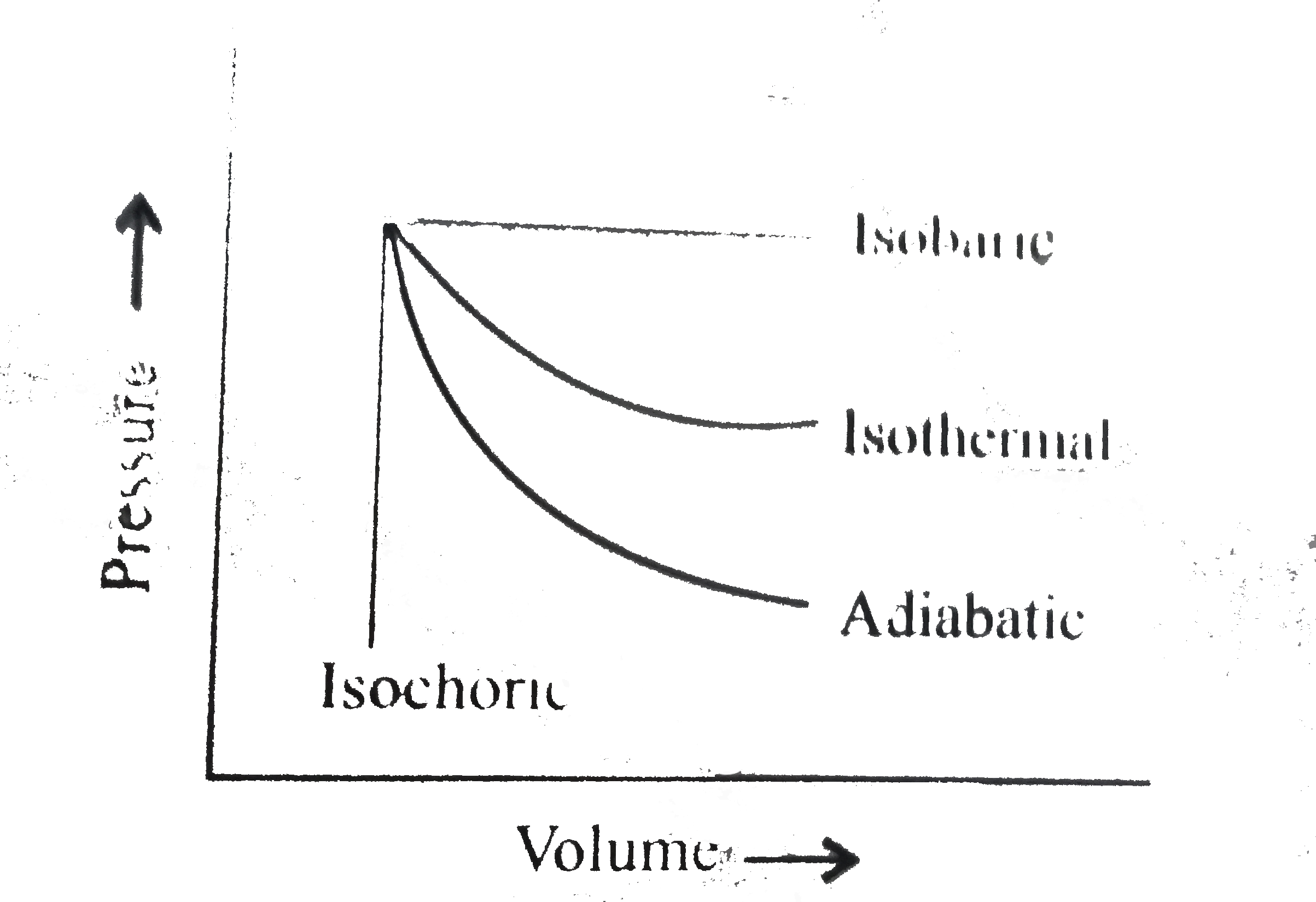1 mole of CaC2,Mg2C3andAl4C3 react with water in separate flask. Work done by the system in the three cases respectively are w1,w2andw3. Then which of the following is/are incorrect.
w3>w2
w1>w3
w3>w1
w1=w2
The correct Answer is:B
To solve the problem, we need to analyze the reactions of calcium carbide (CaC₂), magnesium carbide (Mg₂C₃), and aluminum carbide (Al₄C₃) with water. We will determine the work done by the system in each case based on the number of moles of gas produced.
1. Identify the Reactions:
- Calcium Carbide (CaC₂):
CaC2+2H2O→Ca(OH)2+C2H2 (1 mole of gas)
- Magnesium Carbide (Mg₂C₃):
Mg2C3+4H2O→2Mg(OH)2+C3H4 (1 mole of gas)
- Aluminum Carbide (Al₄C₃):
Al4C3+12H2O→4Al(OH)3+3CH4 (3 moles of gas)
2. Count the Moles of Gas Produced:
- For CaC₂, 1 mole of gas (C₂H₂).
- For Mg₂C₃, 1 mole of gas (C₃H₄).
- For Al₄C₃, 3 moles of gas (3 moles of CH₄).
3. Determine Work Done (W):
The work done (W) by the system is related to the number of moles of gas produced. The formula for work done is:
W=−PΔV
where ΔV is the change in volume. Since ΔV is proportional to the number of moles of gas produced, we can say:
- W1 (for CaC₂) is proportional to 1 mole of gas.
- W2 (for Mg₂C₃) is proportional to 1 mole of gas.
- W3 (for Al₄C₃) is proportional to 3 moles of gas.
4. Compare Work Done:
- Since W1 and W2 both correspond to 1 mole of gas, we have:
W1=W2
- Since W3 corresponds to 3 moles of gas, we have:
W3>W1andW3>W2
5. Identify Incorrect Statements:
The statements provided are:
- W3>W2 (True)
- W1>W3 (False)
- W3>W1 (True)
- W1=W2 (True)
Therefore, the incorrect statement is:
W1>W3
Final Answer:
The incorrect statement is W1>W3.
- Calcium Carbide (CaC₂):
CaC2+2H2O→Ca(OH)2+C2H2 (1 mole of gas)
- Magnesium Carbide (Mg₂C₃):
Mg2C3+4H2O→2Mg(OH)2+C3H4 (1 mole of gas)
- Aluminum Carbide (Al₄C₃):
Al4C3+12H2O→4Al(OH)3+3CH4 (3 moles of gas)
- For CaC₂, 1 mole of gas (C₂H₂).
- For Mg₂C₃, 1 mole of gas (C₃H₄).
- For Al₄C₃, 3 moles of gas (3 moles of CH₄).
The work done (W) by the system is related to the number of moles of gas produced. The formula for work done is:
W=−PΔV
where ΔV is the change in volume. Since ΔV is proportional to the number of moles of gas produced, we can say:
- W1 (for CaC₂) is proportional to 1 mole of gas.
- W2 (for Mg₂C₃) is proportional to 1 mole of gas.
- W3 (for Al₄C₃) is proportional to 3 moles of gas.
- Since W1 and W2 both correspond to 1 mole of gas, we have:
W1=W2
- Since W3 corresponds to 3 moles of gas, we have:
W3>W1andW3>W2
The statements provided are:
- W3>W2 (True)
- W1>W3 (False)
- W3>W1 (True)
- W1=W2 (True)
W1>W3
The incorrect statement is W1>W3.
Similar Questions
Knowledge Check
A gas expands from i to f along the three paths indicated. The work done along the three paths denoted by W1,W2andW3 have the relationship
 AW1<W2<W3BW2<W1=W3CW2<W1<W3DW1>W2>W3
AW1<W2<W3BW2<W1=W3CW2<W1<W3DW1>W2>W3
W1,W2 and W3 are the different sizes of windows 1,2, and 3 respectively placed in a vertical plane. A particle is thrown up in the vertical plane. Let t1,t2 and t3 are the time taken to cross the window W1,W2 and W3 respectively and ΔV1,ΔV2 and ΔV3 are the change in speed after respective window cross.

View SolutionThe weight of an object in the coal mine, sea level and at the top of the mountain are W1,W2 and W3 respectively, then
View SolutionIf W1W2 and W3 represent the work done in moving a particle from A to B along three different paths 1.2 and3 respectively (asshown ) in the gravitational fieled of a point mass m, find the correct relation between W_(1) W_(2)andW_(3)

View SolutionIf W1W2 and W3 represent the work done in moving a particle from A to B along three different paths 1.2 and3 respectively (asshown ) in the gravitational fieled of a point mass m, find the correct relation between W_(1) W_(2)andW_(3)

View SolutionIf w1.w2,w3 and w4 are work done in isothermal, adiabatic, isobaric, and isochoric reversible expansion for an ideal gas, respectively, then
View SolutionThe pressure-volume of varies thermodynamic process is shown in graphs:

Work is the mole of transference of energy. It has been observed that reversible work done by the system is the maximum obtainable work.
wrev>wirr
The works of isothermal and adiabatic processes are different from each other.
wisothermal reversible=2.303nRTlog10(V2V1)
=2.303nRTlog10(P2P1)
wadiabatic reversible=CV(T1−T2)
If w1,w2,w3 and w4 are work done in isothermal, adiabatic, isobaric, and isochoric reversible processes, respectively then the correct sequence (for expansion) would be
View SolutionThe pressure-volume of varies thermodynamic process is shown in graphs:

Work is the mole of transference of energy. It has been observed that reversible work done by the system is the maximum obtainable work.
wrev>wirr
The works of isothermal and adiabatic processes are different from each other.
wisothermal reversible=−2.303nRTlog10(V2V1)
=2.303nRTlog10(P2P1)
wadiabatic reversible=CV(T1−T2)
Calculate work done when 1 mole of an ideal gas is expanded reversibly from 30L to 60L at a constant temperature of 300K
View Solution
